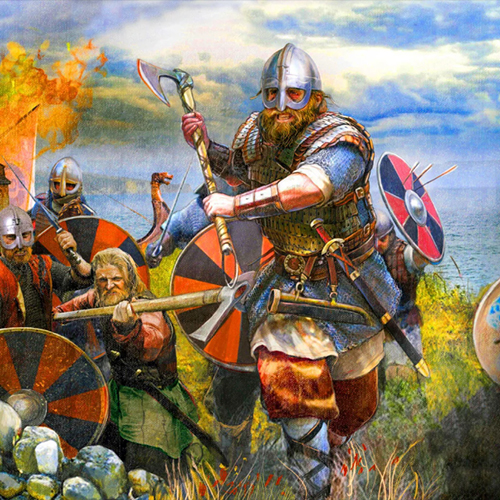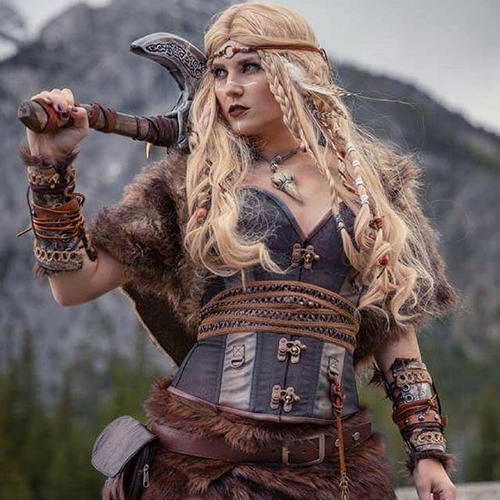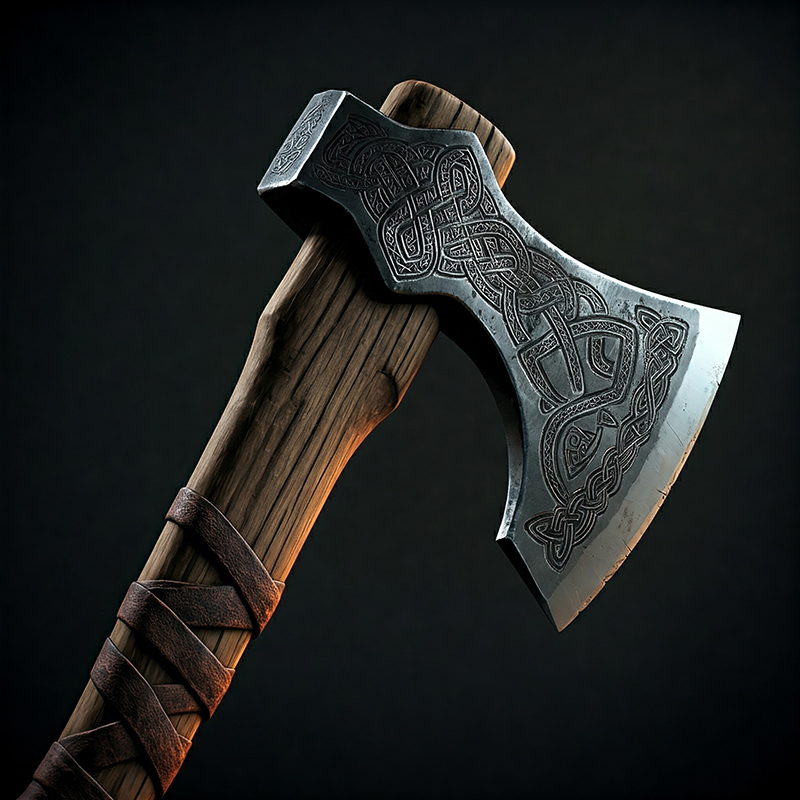Viking Blog
Why Was the Viking Battle Axe the Weapon of Choice for the Vikings?
Vikings, fierce North raiders and seafarers, are often pictured with a battle axe. This iconic weapon was more than a tool for destruction. It embodied their culture, practicality, and unique approach to combat. But what elevated the Viking battle axe above other weapons in the Viking arsenal? What made it such a perfect fit for these formidable warriors?
1. Practicality and Accessibility: A Weapon for the Masses
One reason the Vikings loved the battle axe is its low cost and easy availability. The Viking Age was from about 793 to 1066 AD. Crafting a fine sword took a lot of time and money. Swords required rare iron and a skilled smith. So, they were a luxury for wealthy warriors and nobles.

The axe was a much more democratic weapon. Its simpler design and available materials cut production costs. Many Viking households had axes for everyday tasks. They used them to fell trees for building and to till the land. With some minor tweaks, someone could turn these common tools into fearsome weapons. Its practicality made the axe a good choice for all Vikings, from farmers to seasoned raiders.
2. Versatility: From Farm to Battlefield
The battle axe was a true multi-tool, adaptable to a variety of situations both on and off the battlefield. You could use a smaller hand axe for detailed woodworking, building homes, or cooking. In battle, this versatility proved effective against many armor types and defenses.
The broad, razor-sharp blade of a Viking axe instilled fear in foes with minimal armor. The axe’s weight and speed could be devastating. Even chainmail could not provide complete protection against it. The axe could crush or split the rings and cripple an enemy. Some axes had a curved cutting edge. It allowed warriors to hook and tear away shields. They could even yank mounted foes from their horses. This gave them an edge in the chaos of combat. And if a sharp edge wasn’t needed, the blunt back of the axe head or the haft itself could deliver bone-jarring blows.
3. Simplicity and Efficiency: Brutality Made Easy with the Viking Battle Axe
The axe was easier to use than a sword or spear. Those weapons needed more refined techniques. Mastery of any weapon takes practice. But the axe’s design let novice warriors deliver powerful blows with little training. The heavy axe head gave it great momentum. It required less effort from the user to do serious damage. Its simplicity made it perfect for the Vikings’ fast, brutal raids. Speed and ferocity were key.
Adding to their effectiveness, Viking axes came in a wide array of shapes and sizes. Axe options ranged from compact hand axes for close fighting to two-handed Dane axes. There was an axe for every combat scenario. The fiercest warriors wielded the latter. A single-handed axe and a shield balanced offense and defense. A two-handed axe could cleave through enemy lines with terrifying force.
4. Symbolism and Identity: The Mark of a Norse Warrior
The battle axe was practical. But, it also had deep cultural and symbolic meaning for the Vikings. In Norse mythology, axes were often wielded by gods and legendary heroes. Thor, the god of thunder, became renowned for wielding Mjölnir, a mighty hammer. It was as deadly and divine as an axe.

The battle axe also evolved into a powerful emblem of the Viking warrior. The sword, often linked to European knights, was not like the axe. The axe symbolized the rugged, self-reliant spirit of Norse culture. Its use and accessibility made it a hallmark of Viking warfare. It became a symbol of their unique identity.
5. Perfecting the Art of War: Axes in Viking Tactics
People recognized the Vikings for their clever, flexible combat tactics. Their success relied on the battle axe. Their infamous raids often involved swift, unexpected attacks on coastal settlements and monasteries. In these cases, the axe’s power and fearsome look were great psychological weapons. A Viking berserker, axe gleaming in the sun, charged into battle. It terrified its enemies.
In larger-scale battles, the axe demonstrated the same level of effectiveness. The Dane axe had a long handle and a huge head. It was a deadly weapon in the hands of skilled front-line warriors. These elite fighters, called ‘housecarls,’ could cut through enemies with brutal efficiency. These weapons had a huge psychological impact. Their effects were as damaging as their physical harm. They broke the morale of opposing forces.
6. A Lasting Legacy: The Enduring Symbol of the Viking Battle Axe
The prominence of the battle axe in Viking culture has left an enduring legacy. Finds, like burial site axes and art, prove the weapon’s importance. These artifacts show the skill and varied designs of Viking axes. They blend practicality and artistry in their weapons.

The battle axe is still a symbol of the Viking Age. It conjures images of fearless warriors and their legendary exploits. Its link to the Vikings shows its role as more than a weapon. It represents their resilience, resourcefulness, and enduring culture.
Conclusion
The Vikings’ use of the battle axe was due to practical, tactical, and cultural factors. Its low cost, versatility, and effectiveness made it a must-have for all warriors. Its symbolism made it an iconic symbol of Norse culture. It reflected the culture’s importance in many ways. The battle axe, used in war and daily tasks, was a symbol of the Vikings’ resourcefulness and tenacity. It left an undeniable mark on history.

